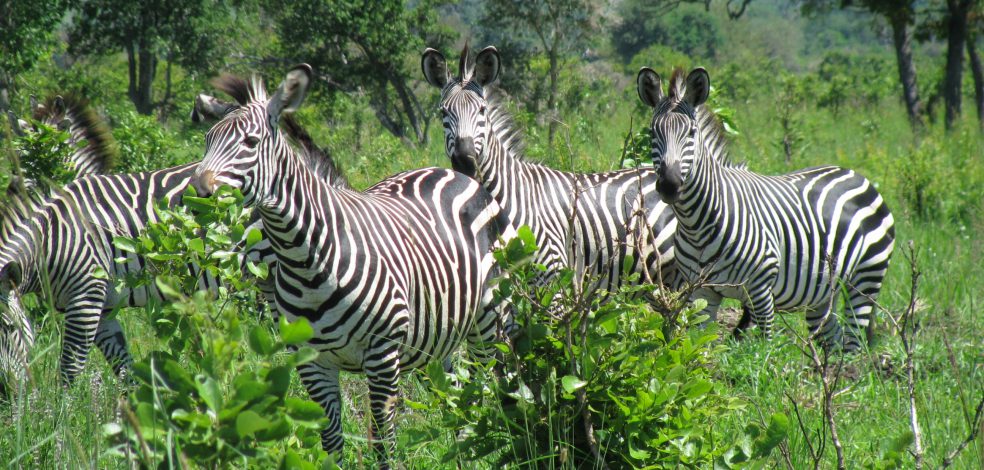Plants in Sweden can have a difficult life, but climate change has provided a more benign environment for some of them, including the white swallow-wort, Vincetoxicum hirundinaria. This perennial herb grows in patches in sun-exposed rocky areas, in forests located below cliffs, and along the edges of wooded areas. The plant forms clumps that are heavily laden with flowers in June and July, and creates pod-like fruits in July and August

Vincetoxicum hirundinaria growing in rocky outcrop (top photo). Vincetoxicum pods releasing their wind-dispersed seeds (bottom photo).
Christer Solbreck has had a lifelong interest in insect populations, and he has been following the insects that eat Vincetoxicum’s seeds for the past 40 years. As he described to me, surprisingly few population ecologists actually measure the amount of food available to insects. I should add that very few people have the resilience to study the same population of insects for 40 years, either. And interestingly, though this paper discusses the effect of a changing climate on seed production and seed predation, it was not Solbreck’s intent to consider climate change as a variable when he began, as climate change was not a concern of most scientists in the 1970s.
But climate change has happened in southeastern Sweden (and elsewhere), and has affected ecosystems in many different ways. Ecologists can quantify climate change by describing its effect on the vegetation period, or growing season (days above 5°C), which has increased by about 20 days since the mid 1990s.

Length of growing season (vegetation period) in southern Sweden.
During the same time period the abundance of Vincetoxicum has increased sharply.

Vincetoxicum abundance, measured as area of the research site covered, during the study.
You will note that “Vincetoxicum” has the word “toxic” in its midst; the seeds are toxic to most consumers, and are important food sources for only two insect species. Euphranta connexa females lay eggs in developing fruits of the host plant, with the emerging larva boring through the seeds and killing most of them. Lygaeus equestris is an all-purpose seed predator; both larvae and adults suck on flowers, on developing seeds within the fruits, and on dry seeds they find on the ground up to a year later.

Euphranta connexa female lays eggs in an immature seed pod.

Lygaeus equestra larva feeds on a fallen seed.
Solbreck teamed up with biostatistician Jonas Knape to analyze his data. From the beginning of the study, Solbreck suspected that annual variation in weather – particularly rainfall – might influence Vincetoxicum seed production, and consequent population growth of the two insect species. They discovered something quite unexpected; the dynamics of seed production shifted dramatically in the second half of the study, alternating annually from very high to very low production over that period. This dynamic shift coincides with the extension of the growth season as a result of climate change.

Seed pod abundance by year.
The researchers argue that there is a non-linear negative feedback relationship of the previous year’s seed production on the current year’s seed production. Negative feedback occurs when an increase in one factor or event causes a subsequent decrease in that same factor or event. In this case, an increase in seed production uses up plant resources, leading to a decrease in seed production the following year. But the effect is non-linear, and does not come into play unless Vincetoxicum produces a huge number of seeds, as shown by the graph below,

Seed production in the current year in relation to seed production in the previous year. Note that both axes are logarithmic. The curve represents the expected seed pod density generated by the statistical model, with the shaded area representing the 95% credible intervals. Open circles are data for 1977-1996, while closed circles are data for 1997-2016.
The researchers also found that high rainfall in June and July increased seed production.
So how do these wild fluctuations in seed production affect insects and the plant itself? One important finding is that in high seed production years, the proportion of seeds attacked by insects plummets because the sheer number of seeds overwhelms the seed-eating abilities of the insect consumers. Ecologists describe this phenomenon as predator satiation.

Seed predation rates in relation to seed pod density. Note that both axes are logarithmic. The curve represents the expected predation rate generated by the statistical model, with the shaded area representing the 95% credible intervals. Points are E. connexa predation rates while triangles are combined predation by both insect species.
As a result of predator satiation, there were, on average, seven times as many healthy (unattacked) seed pods in 1997-2016 than there were in 1977-1996. Presumably, this increased number of healthy seeds translates to an increase in new plants becoming established in the area. An important takehome message is that the entire dynamics of an ecosystem can change as a result of changes to the environment, in this case, climate change. More long-term studies are needed to evaluate how common these shifting dynamics are likely to become in the novel environmental conditions we humans are creating.
note: the paper that describes this research is from the journal Ecology. The reference is Solbreck, Christer and Knape, Jonas (2017), Seed production and predation in a changing climate: new roles for resource and seed predator feedback?. Ecology, 98: 2301–2311. doi:10.1002/ecy.1941. Thanks to the Ecological Society of America for allowing me to use figures from the paper. Copyright © 2017 by the Ecological Society of America. All rights reserved.
